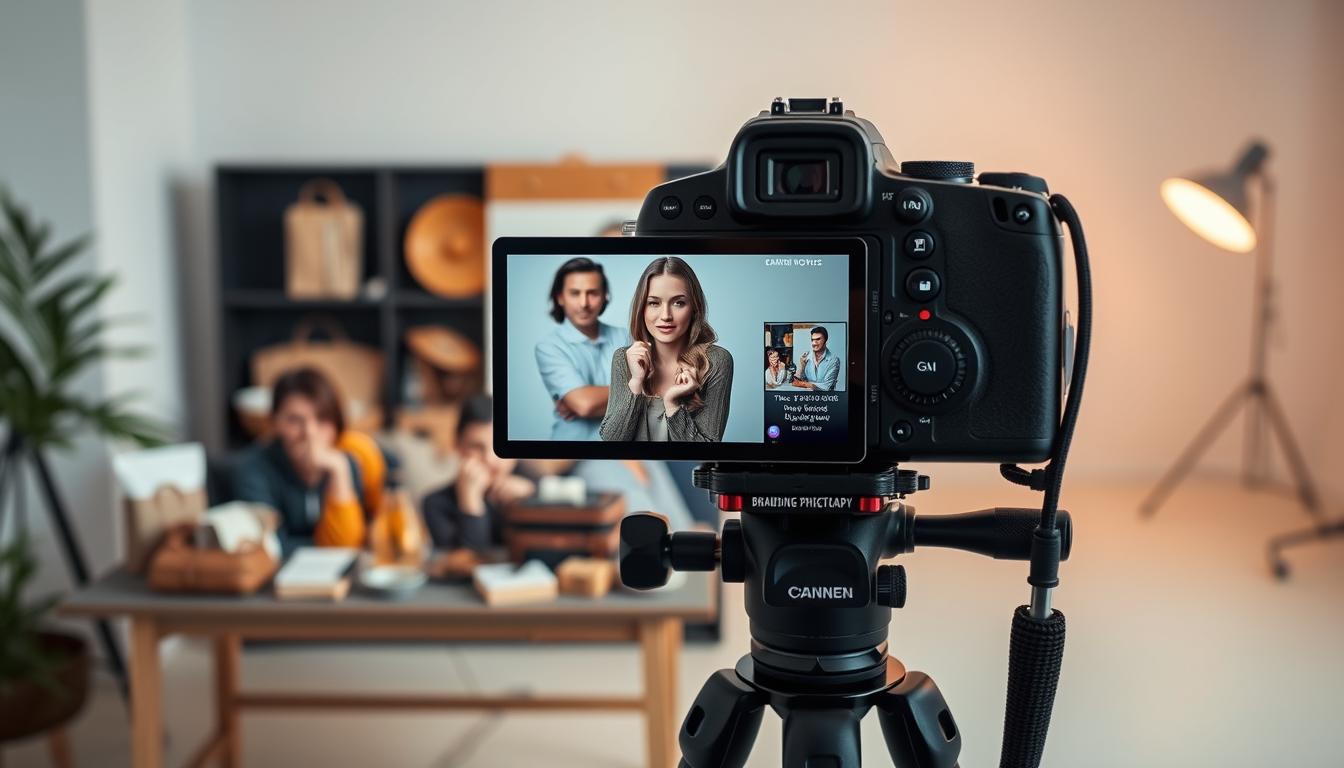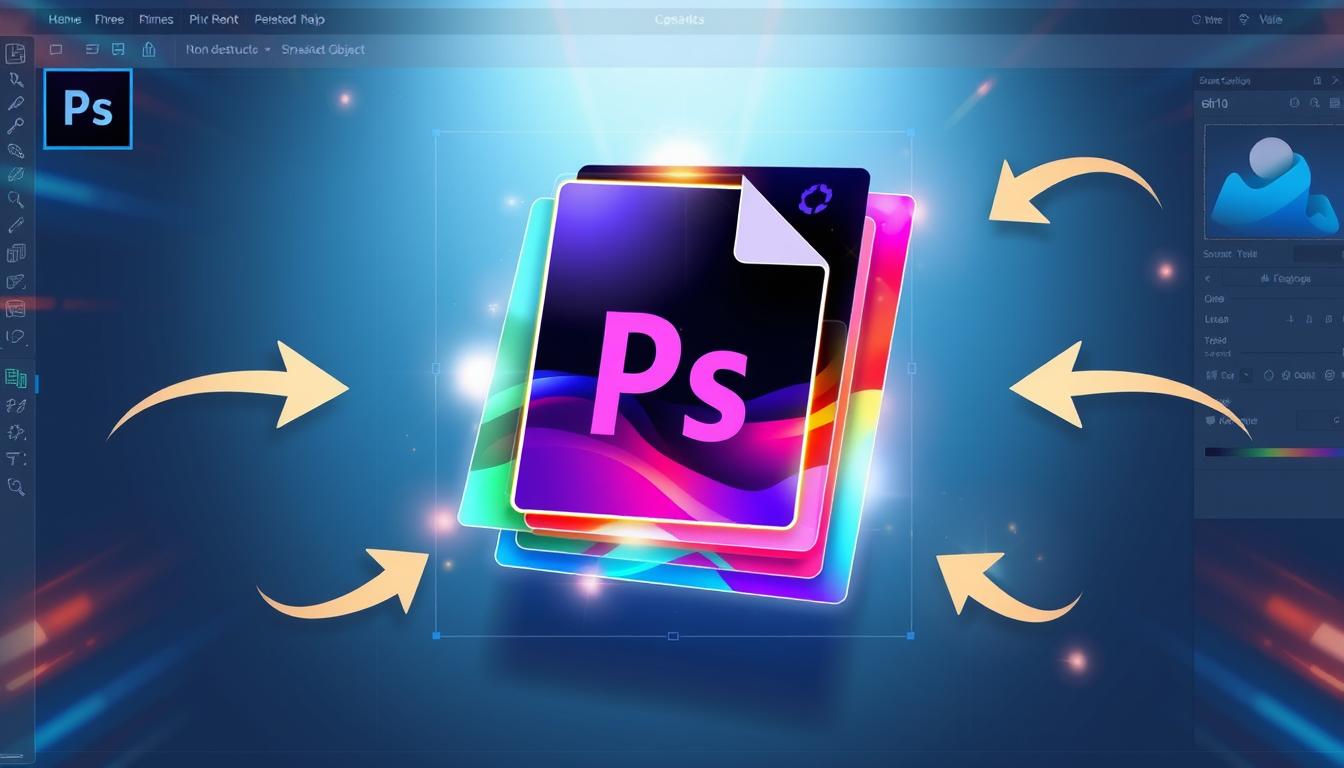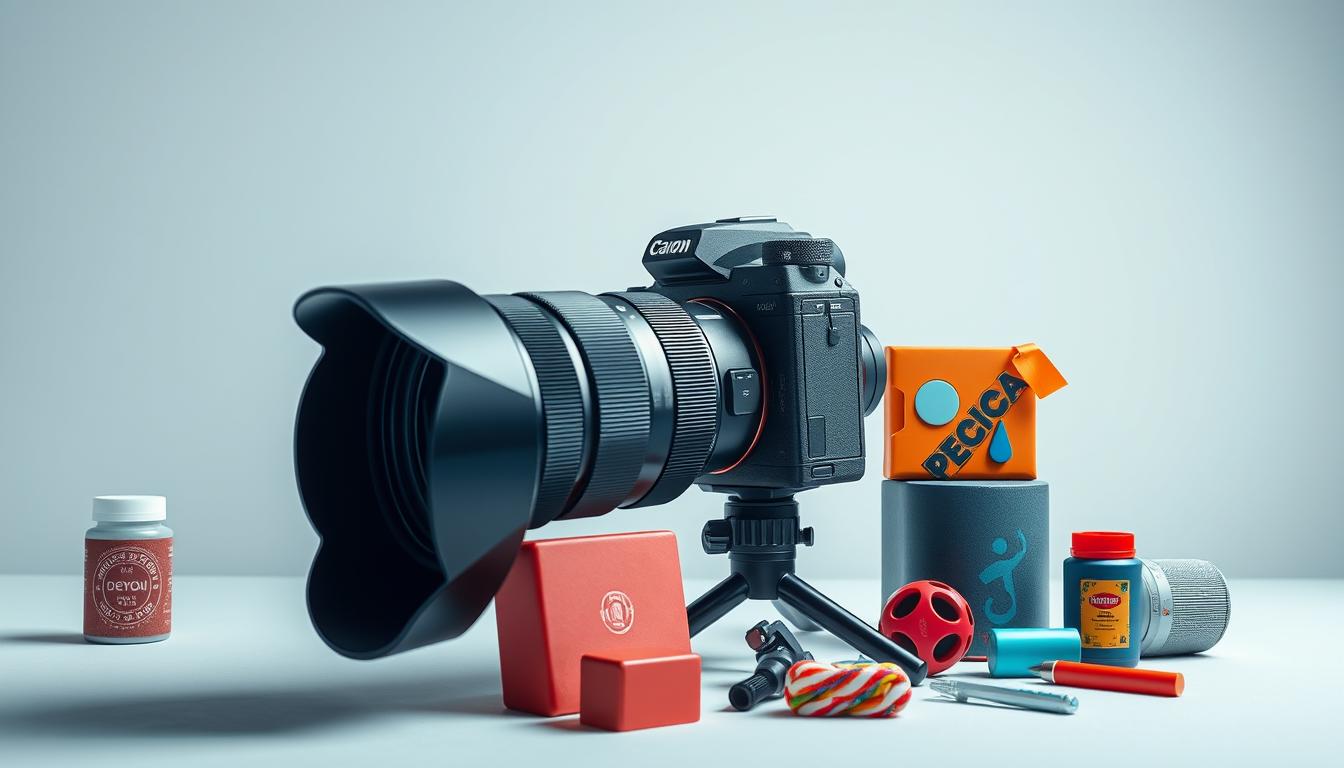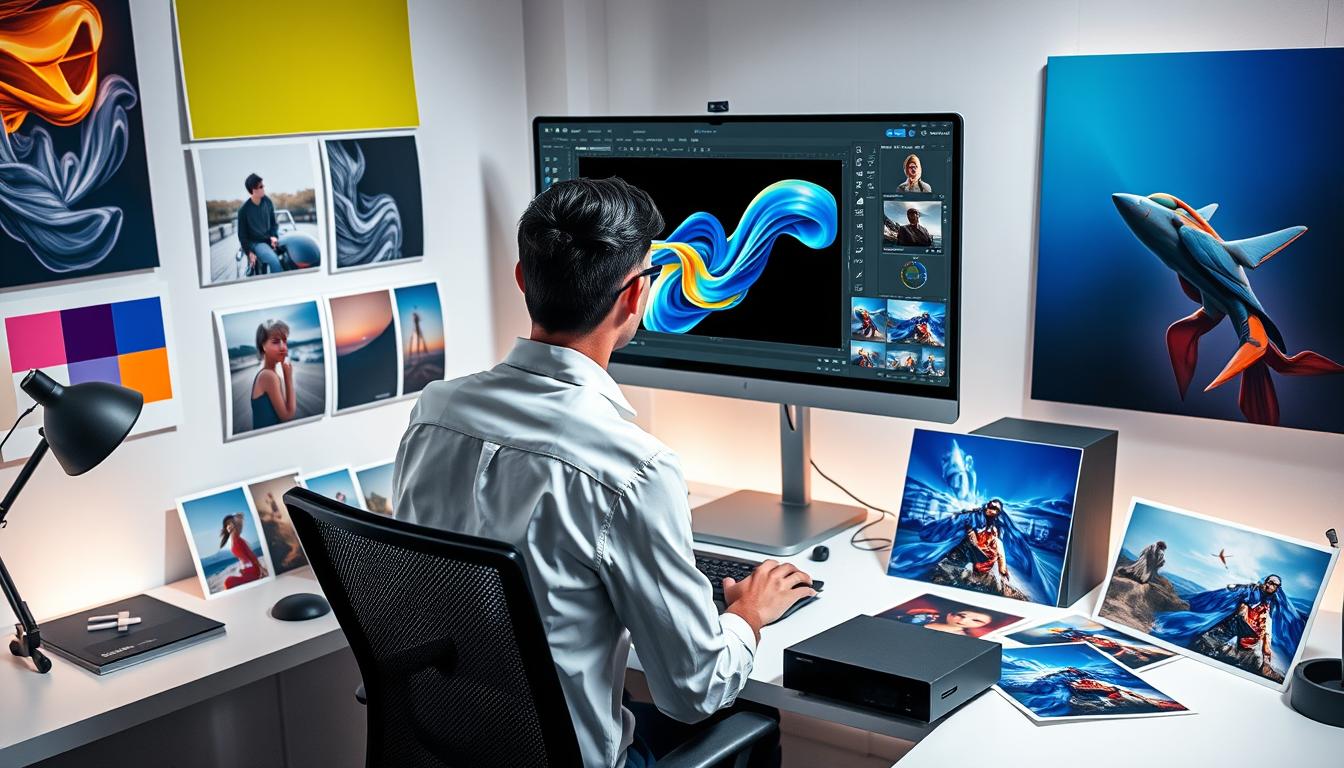Branding photography is not just taking pictures. It’s about creating a visual story that speaks to your audience. It makes your brand stand out.
By using high-quality, relevant images, businesses can share their message and values more clearly. This helps create a meaningful connection with their audience.
Understanding Branding Photography
Branding photography is more than just taking pictures. It’s about telling a visual story that truly connects with your audience. This makes your brand stand out.
To do branding photography well, you need to know your brand inside out. It’s about making images that look good and tell your brand’s story.
Definition and Core Concepts
Branding photography is about creating a visual language that speaks to your audience. It’s about taking high-quality images that show your brand’s personality and values. The importance of branding photography is in building an emotional connection with your audience.
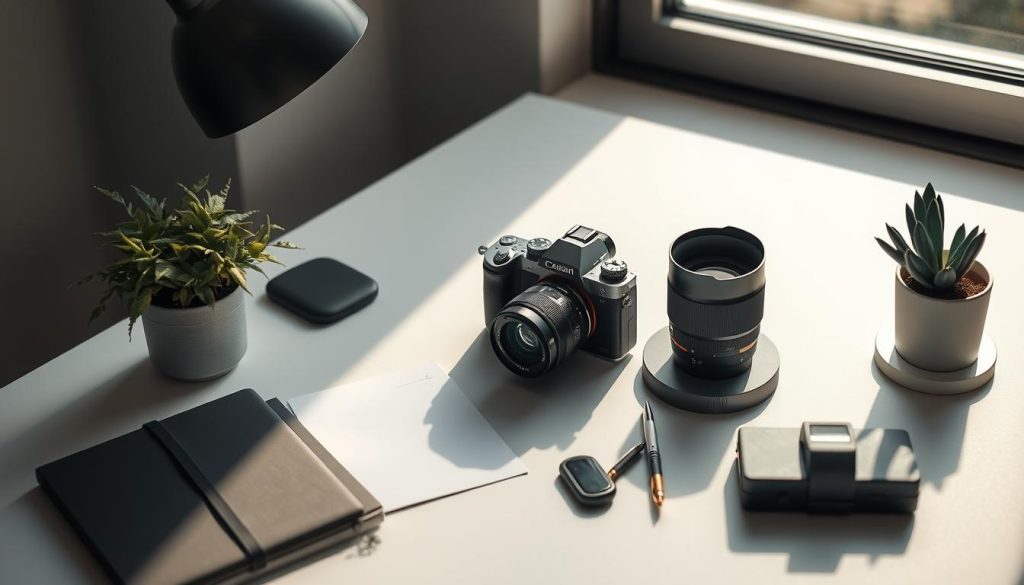
By investing in branding photography, businesses can stand out from their competitors. They can also establish a strong visual identity.
How Branding Photography Differs from Other Photography Styles
Unlike event or product photography, branding photography tells a brand’s story through visuals. When you compare branding photography vs other styles, it’s clear. Branding photography aims to leave a lasting impression and show a brand’s essence.
Strategic Value of Visual Identity in Business
A well-crafted visual identity is key for businesses wanting to stand out. It’s about telling a visual story that truly connects with your audience.
Building Brand Recognition Through Consistent Imagery
Consistent imagery is vital for brand recognition. Using the same visual style everywhere helps make a brand more memorable. Branding photography benefits a lot from this, creating a story that speaks to the audience.
Coca-Cola is a great example. They’ve kept their visual identity the same in all their ads. This makes their brand instantly recognizable everywhere.
Creating Emotional Connections with Your Target Audience
Visual identity also plays a big role in creating emotional connections with your audience. Branding photography that tells a story or stirs emotions strengthens the bond between brand and customer. Using images that reflect the audience’s values and dreams creates a deeper connection.
For instance, a brand that shows images of sustainability and eco-friendliness attracts customers who share these values. This builds a loyal customer base.

What is Branding Photography: Essential Elements and Characteristics
Branding photography is more than just taking pictures. It’s about crafting a visual story that speaks to your audience and builds a real connection. At its core, it involves several key elements that come together to create a strong brand image.
Consistency in Style and Visual Language
Consistency is key in branding photography. It means using the same style and visual language in all images. This can be done by sticking to a certain color palette, lighting, and composition.
For example, a brand might choose a bright and airy style to show friendliness and approachability. Consistent branding photography helps in building recognition and reinforcing the brand’s message.
Authenticity and Brand Personality Expression
Authenticity is another vital element in branding photography. It’s about capturing the true essence of the brand and its personality. This can be done by showing real people, places, and moments that reflect the brand’s values and culture.
Authentic imagery helps in creating an emotional connection with the audience, making the brand more relatable and trustworthy.
Strategic Visual Storytelling Techniques
Strategic visual storytelling is about using images to tell a story that grabs the audience’s attention. It involves using imagery, composition, and context to share a narrative. For example, a brand might use a series of images to show its product in different scenarios, highlighting its benefits and features.
By using these essential elements, businesses can create a strong branding photography strategy. This strategy resonates with their audience and sets them apart from competitors.
Types of Branding Photography for Different Business Needs
Branding photography comes in many styles to fit various business needs. Knowing the different types helps businesses pick the best way to share their story. This helps them achieve their branding goals effectively.
Product and Service Showcase Photography
Product and service showcase photography shows off what a business offers. It’s key for online stores, giving customers a clear look at products. Good product photos make shopping online better, leading to happier customers and fewer returns.
Good examples include lifestyle product photography and beauty shots. These show products in use and focus on details and packaging.
Lifestyle and Environmental Brand Imagery
Lifestyle and environmental brand imagery shows how a brand fits into people’s lives. It creates a bond with the audience by showing the brand’s place in their world. It’s great for brands that want to feel like part of a community.
Team and Personal Branding Portraits
Team and personal branding portraits make a brand more relatable by showing its people. These photos are used everywhere, from websites to social media. They help build trust and connection by putting faces to the brand.
Good team photos show employees at work, highlighting their roles and personalities. This makes the brand feel more real and personal.
Planning a Successful Branding Photography Session
Planning well is key to a great branding photography session. It includes several important steps. These steps make sure your photos match your brand’s look and message.
Defining Your Brand's Visual Goals and Audience
First, you need to define your brand’s visual goals and know your audience. You must decide what message you want to share and the feelings you want to create. For example, a young brand might aim for lively, natural shots. A luxury brand might focus on high-quality product images.
It’s also vital to understand your audience. This helps you create photos that they will love. Think about what they like to see and what they find appealing.
Creating Comprehensive Shot Lists and Mood Boards
Making a comprehensive shot list and mood board is a smart move. A shot list shows what images you need to get. A mood board shows your brand’s style, including colors and textures.
These tools keep your session focused. They make sure your photos match your brand’s look.
Strategic Location and Prop Selection
Location and props you choose are very important. They should show off your brand’s personality and connect with your audience. For instance, a green brand might pick outdoor spots.
Props can also make your photos better by adding meaning. Pick props that fit your brand’s style and message.
By planning carefully, you can get great branding photos. This includes setting clear goals, making lists and mood boards, and choosing the right places and props. This way, your photos will really show off your brand’s identity.
Collaborating with Professional Branding Photographers
A professional branding photographer can make your brand’s story more engaging and real. It’s key to work with someone who gets what you’re trying to say. They should understand your brand’s vision.
Selecting the Right Photographer
Choosing the right photographer means checking their portfolio. Make sure their style fits your brand’s look. It’s also good to find someone who knows your industry well.
Essential Questions to Ask
Before you book a photographer, ask the right questions. Find out about their experience, how they handle branding photos, and how they’ll tell your brand’s story.
- What experience do you have with branding photography?
- Can you share examples of your previous work?
- How do you approach a branding photography project?
Communicating Your Brand Story
To get your brand’s story right, share its values, mission, and what makes it special. This helps the photographer understand your brand’s personality and look.
DIY Branding Photography: Professional Results on a Budget
Even with a small budget, you can get professional branding photos. A little creativity and basic equipment can make high-quality visuals. These visuals can really boost your brand’s image.
First, learn the basics of branding photography. This means picking the right gear, mastering light, and using composition and styling that fits your brand.
Essential Equipment and Setup for Quality Images
Choosing the right equipment is key for great photos. You don’t have to spend a lot to get great results. Start with a DSLR or mirrorless camera, a prime lens, and a tripod. Also, get some basic lighting tools like softboxes or reflectors to improve your photos.
Mastering Lighting for Non-Professional Photographers
Lighting is very important in photography. Learning to use it well can make your branding photos look amazing. Start with natural light, and for indoor shots, get some basic lighting tools like softboxes.
Tips for Mastering Lighting:
- Use natural light whenever possible
- Invest in basic lighting equipment like softboxes
- Experiment with different lighting setups
Composition and Styling Techniques for Brand Cohesion
Good composition and styling are key for images that show off your brand. Learn about composition, like the rule of thirds, and styling. Styling means choosing props, colors, and textures that match your brand’s vibe.
By using these DIY branding photography tips, you can get pro results without spending a lot. It’s all about being creative, trying new things, and knowing what makes great branding photos.
Current Trends in Branding Photography
Authenticity, diversity, and sustainability are key in branding photography today. Brands are changing how they look to meet new audience expectations.
People want brands that offer quality and mean something. This is why branding photography now focuses on real connections with the audience.
Authenticity and Candid Moments
Authenticity and candid moments are big in branding photography. Brands are moving from perfect images to real, spontaneous shots. These moments connect with people on a deeper level.
This trend shows the brand’s true essence and people in a natural way. It’s about telling a story that viewers can relate to, not just showing products.
Inclusive and Diverse Representation
Inclusive and diverse representation is another key trend. Brands are showing the diversity of their audience in their images. This includes different cultures, ages, and lifestyles.
This approach makes the audience feel seen and valued. It makes the brand’s message stronger and more impactful. It’s about respecting and reflecting the world we live in.
Sustainability and Social Responsibility Messaging
With growing awareness of environmental and social issues, sustainability and social responsibility messaging is becoming more common. Brands are using their images to show they care about making a difference.
By using these trends in their photography, businesses can stay relevant and build a stronger bond with their audience.
Maximizing ROI: Implementing Your Branding Photos Effectively
To get the most out of branding photography, you need a smart plan. This plan should cover how to use your photos on different marketing platforms. It’s all about using your photos in a way that boosts your brand’s image.
Strategic Website and Social Media Integration
It’s key to put your branding photos on your website and social media. This makes your brand look consistent everywhere. Here’s how:
- Place high-quality photos on your website’s main pages.
- Add your branding to social media posts to get more engagement.
- Make sure your visuals match on all your online platforms.
Cross-Platform Marketing Materials and Advertising
Branding photos are great for marketing materials and ads. They help show off your brand’s look. Here’s how to use them:
- Put your branding in print and digital ads, like brochures and emails.
- Use your photos in ads on social media, search engines, and more.
This way, you create a consistent brand image that people remember.
Content Calendar Planning for Consistent Brand Presence
Having a content calendar is vital for keeping your brand consistent. It helps you:
- Plan your content ahead to post regularly and avoid gaps.
- Match your photo releases with other marketing efforts for better results.
By following these steps, you can maximize the ROI of your branding photos. This will make your marketing more effective overall.
Conclusion
Branding photography is key to making your business stand out. It helps you create a strong visual identity. This helps you connect more effectively with your audience.
A good branding photography session makes your brand look consistent and real. It builds emotional bonds with your audience. This leads to more business growth and recognition.
In short, branding photography is vital for businesses wanting a strong brand. By following the strategies in this guide, you can make your branding photography work hard for you. This will bring great results and value to your business.
FAQ
What is branding photography and how does it differ from other types of photography?
Branding photography creates a visual identity for a brand. It captures its essence and conveys its message. Unlike other photography, it focuses on a consistent visual language that connects with the audience.
How can branding photography help my business?
Branding photography strengthens your visual identity. It builds brand recognition and creates emotional connections with your audience. It also helps your brand stand out and makes marketing more effective.
What are the essential elements of effective branding photography?
Effective branding photography needs consistency in style and visual language. It must be authentic and tell a strategic visual story. These elements create a compelling brand narrative that engages the audience.
How do I plan a successful branding photography session?
To plan a successful session, define your brand’s visual goals and audience. Create detailed shot lists and mood boards. Choose locations and props wisely. Being well-prepared ensures a productive session with the desired results.
Can I do branding photography myself on a budget?
Yes, you can do branding photography on a budget. Focus on essential equipment and lighting techniques. Use composition and styling to ensure brand cohesion for professional results.
How do I maximize the ROI of my branding photography?
To maximize ROI, integrate your photos into your website and social media. Use them in marketing materials and advertising. Plan a content calendar for consistent brand presence.
What are the current trends in branding photography?
Current trends include authenticity and candid moments, diverse representation, and sustainability. Staying updated on these trends keeps your brand’s visual identity fresh and relevant.
How do I choose the right branding photographer for my business?
To choose the right photographer, find someone who understands your brand vision. They should have a style that matches your brand and can tell your brand story through their photos.

